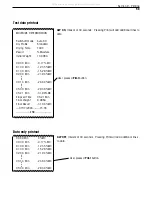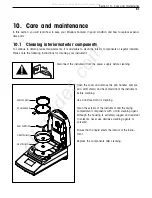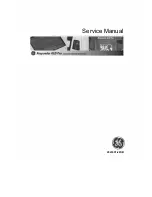
4 9
Section 8 - How to obtain the best results
8. How to obtain the best results
Following your first practical work with the Moisture Analyzer, in this section you will find important information
on how to obtain optimum results. You will learn what parameters influence the measurement process and how
you can match the instrument optimally to your particular measurement test.
8.1 Measurement principle of the Halogen Moisture Analyzer
Your instrument performs measurements based on the
thermogravimetric principle
, i.e. the moisture is deter-
mined from the weight loss of a sample dried by heating.
The Ohaus Moisture Analyzer comprises two instruments: a precision
balance and a dryer unit. In contrast to other thermogravimetric methods
(drying oven, infrared, microwave), the Halogen Moisture Analyzer
operates with a halogen dryer unit. This ensures fast heating of the
sample and thus guarantees rapid availability of the measurement
results.
In addition to thermogravimetric methods, chemical and electrical methods for moisture determination are also
common. A familiar chemical method is Karl Fischer in which the water content is determined by titration. This
method is particularly suitable for determination of the water content of liquids or for the detection of very small
amounts of water (ppm range) in solid and liquid samples.
Regardless of the measurement method used, the quality of the measurement stands or falls by the
preparation
of the sample
and
a correct choice of the important measurement parameters
:
Sample size
Type of sample
Drying temperature
Drying time
In practice, however, not only the quality of the measurement results, but also the
speed of the measurement
process
is important. Thanks to its drying principle (with the heat generated by a halogen radiator), the Halo-
gen Moisture Analyzer is very fast. The drying speed can even be increased further through optimum settings of
the instrument.
The
optimum drying temperature and the drying time
are dependent upon the nature and size of the sample
and the desired accuracy of the measurement results.
These can be determined only by experiment.
10.560g
6.578g
160˚c
All manuals and user guides at all-guides.com
















































